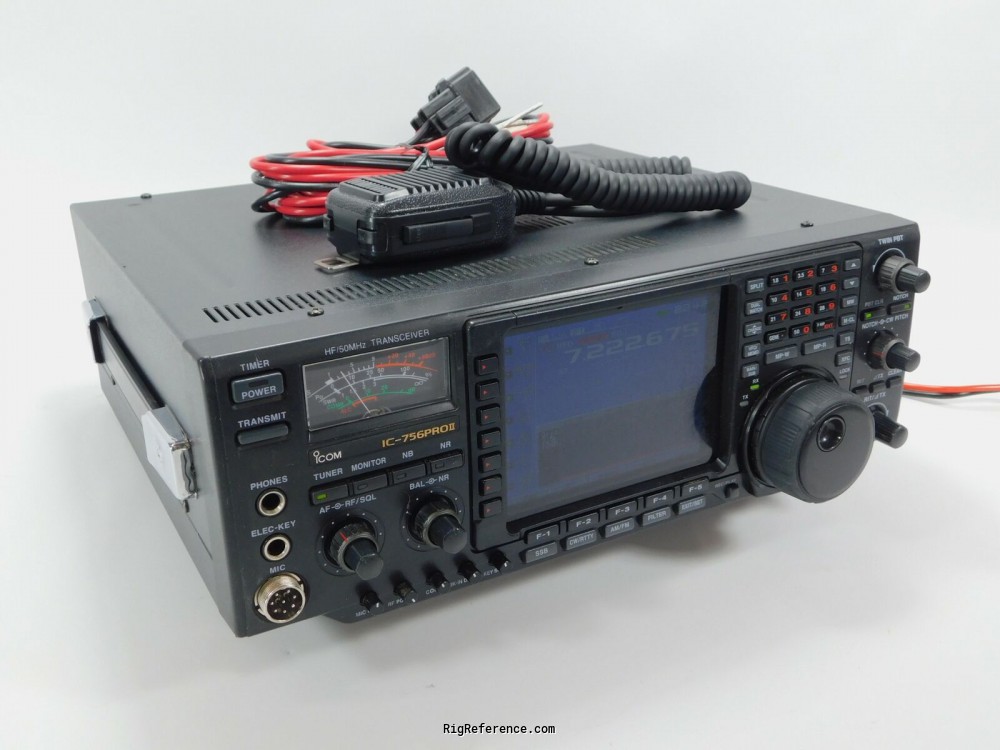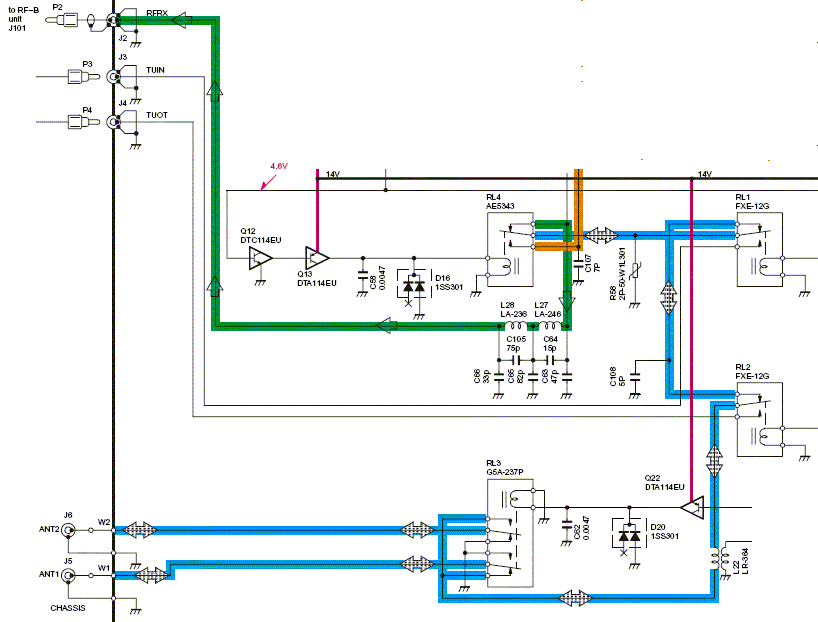

#Icom 756 pro ii no tx series#
I’m very pleased to report that it works perfectly with the Pro III series as well! The circuit that I use with my Pro III looks like this: By applying a simple circuit designed by Tom (W8JI) to his IC-756 (non-pro version) Dave found that the negative effects of the internal ALC were completely eliminated. I first read about using this method to set the AM power level of the 756 series of rigs in an article by Dave (WB4IUY) at the AM Forum. The concept is nothing new as external ALC schemes have been used for years to eliminate overshoot issues that are problematic with some solid state rigs when they drive amplifiers. Watch the downward deflection on the meter as the rig is modulated.įortunately, it is extremely simple to defeat the nasty effects of the ICOM’s internal ALC when running AM. In the video below, the Pro III is running 15 watts of AM carrier. If you don’t have a scope, you can easily view what is happening by watching the AM power output of the Pro III with an average reading wattmeter. This produces a very gritty signal with strange sounding artifacts. As the rig attempts to develop peak power, the internal ALC will actually cause it to heavily downward modulate. When you reach somewhere around 50 – 60 percent modulation, you will begin to see the ALC restrain the positive peaks, preventing much more than 70% modulation at best. The dirty truth is that the Pro III is simply unable to reach anywhere close to 100% modulation with the internal ALC present. The ALC effect is very evident when seen on an oscilloscope that is set up to monitor the RF envelope. The aggressive clamping action of the ALC is the major obstacle to overcome when trying to attain a healthy AM signal. The line-out of the FRG-7700 was directly connected to the line-in of a station computer and the recovered audio was recorded with Adobe Audition. The receiver is a Yaesu FRG-7700 in the 12 kc bandwidth position. Pro III with external ALC and audio processing on AM size is 410 kb – mp3 What the Pro III sounds like on AM without the internal ALC and internal audio. The mp3 audio clip below is an over the air recording of my IC-756 Pro III running with external ALC and processed audio: With both of those items addressed, the 756 series of rigs can sound very good on AM. Once that’s accomplished, the second step is to address the lack of audio processing in the AM mode. To improve the performance of the Pro III on AM, a good place to begin is to stop the aggressive action of the internal ALC. The gritty distortion in the audio is a by-product of the agressive ALC action as positive peaks are limited to no more than the carrier power level. Fairly restricted, with a midrange peak, and the characteristic sound of a carbon microphone from an old telephone. Pro III with stock audio on AM as it sounds on a Yaesu FRG-7700 size is 310 kb – mp3 What your AM signal actually sounds like to someone else over the air. This audio sample was made by patching the headphone jack monitor output of the Pro III directly into the line input of one of my soundcards.

Pro III with stock audio on AM as it sounds through the Pro III monitor size is 150 kb – mp3 What people think they sound like with the stock Pro III audio on AM. Pro III with external ALC and audio processing on AM

Pro III with stock audio on AM as it sounds on a Yaesu FRG-7700 Pro III with stock audio on AM as it sounds through the Pro III monitor The two mp3 clips below illustrate the difference between what is heard on the monitor, and what is actually heard by stations listening to you: Don’t be fooled by this, they are picking off the monitor signal before the DSP and ALC circuits become involved in the process. When you listen to yourself in the monitor with a pair of headphones, your transmitted signal seems to sound pretty decent on AM. There is a bit of deception going on here as well, with the way ICOM chose to implement the built-in monitor of the 756 Pro series. Even with a high quality, flat response microphone, the stock internal audio produces a very restricted and gritty sounding signal, with no processing or equalization. Unfortunately, the AM transmit side of the stock IC-756 Pro series is a somewhat different story. The available bandwidths include 3 kHz, 6 kHz, and 9 kHz positions, with the two wider ones being capable of providing some very pleasant listening experiences, especially when a good quality speaker or audio system is connected. There are quite a few people running the 756 Pro series of rigs, who have discovered that it has a very nice AM receiver.


 0 kommentar(er)
0 kommentar(er)
